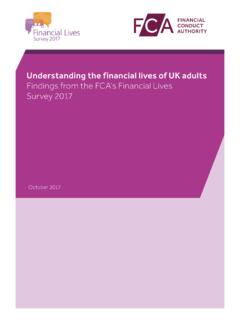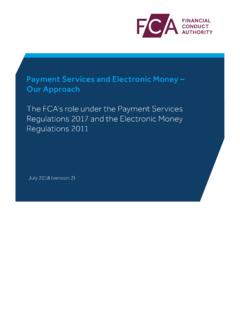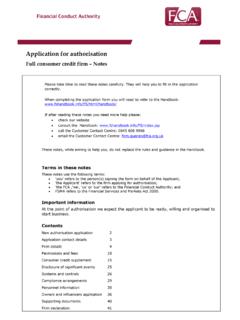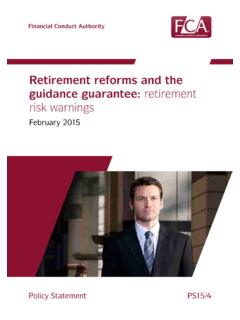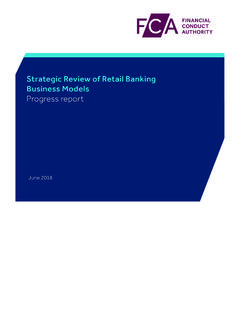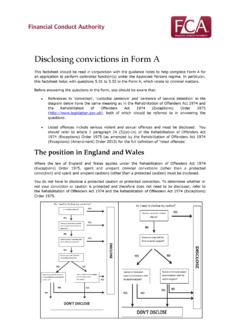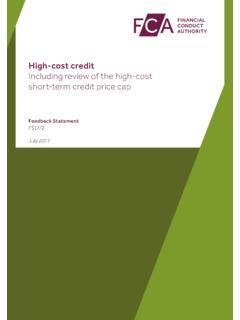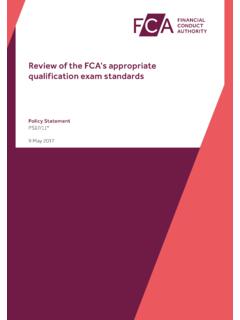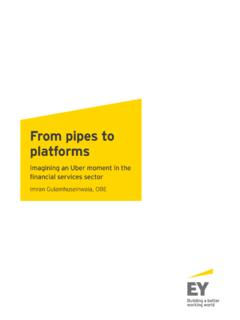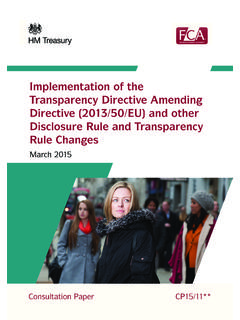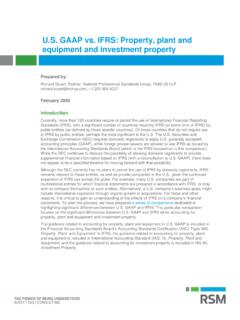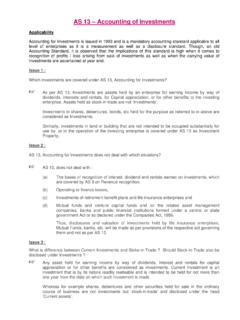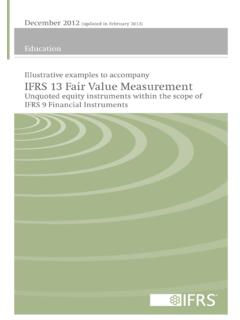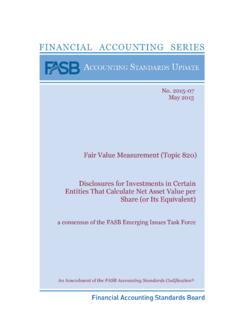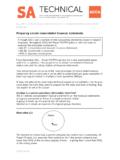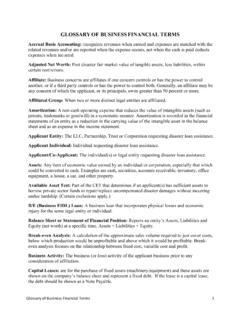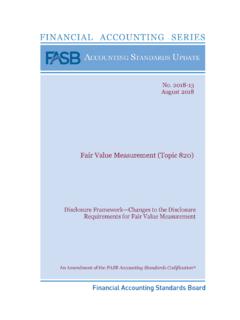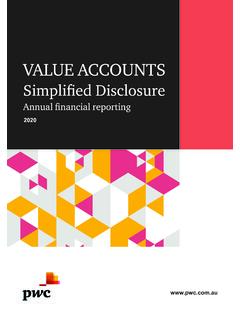Transcription of PS21/12: Assessing value for money in workplace pension ...
1 Assessing value for money in workplace pension schemes and pathway investments: requirements for IGCs and GAAs Policy StatementPS21/12 October 20212PS21/12 Financial Conduct AuthorityAssessing value for money in workplace pension schemes and pathway investments: requirements for IGCs and GAAsMoving around this documentUse your browser s bookmarks and tools to navigate. To search on a PC use Ctrl+F or Command+F on relates toConsultation Paper 20/9 which is available on our website at : up for our news and publications alertsSee all our latest press releases, consultations and speeches. Contents Summary 31 The wider context of this policy statement 42 Summary of feedback and our response 8 Annex 1 List of non-confidential respondents 19 Annex 2 Abbreviations used in this paper 21 Appendix 1 Made rules (legal instrument)3 PS21/12 SummaryFinancial Conduct AuthorityAssessing value for money in workplace pension schemes and pathway investments: requirements for IGCs and GAAs SummaryIn 2020, we consulted on targeted measures specifying a definition of value for money (VFM) and the 3 key elements that a pension provider s Independent Governance Committee (IGC) or Governance Advisory Arrangement (GAA) should take into account in Assessing VFM.
2 The 3 key elements are costs and charges, investment performance and quality of services. These rules also require that IGCs should compare their provider s offerings with other similar propositions on the market as part of the VFM assessment. This policy statement summarises feedback received to CP20/9, and sets out our final most significant issue raised in the feedback to CP20/9 was around the level at which this comparison should be conducted. To address concerns raised in the feedback, our final rules allow IGCs some flexibility to decide how best to conduct the new rules are a step towards a more systematic and transparent framework for Assessing VFM in pensions, which will enhance IGCs ability to compare pension products and drive VFM on behalf of the consumers they VFM in pensions is complex, and while the new rules will provide greater consistency and clarity, we think further work is required to improve the comparability of VFM across the market.
3 The Pensions Regulator (TPR) and the FCA recently launched a joint discussion paper asking for input on standardised metrics and benchmarks for measuring the 3 key elements of VFM. It also seeks to encourage discussions around transparency and the availability of comparison data. Please review the questions posed in our discussion paper and send us your views using the address by 10 December 2021. In this policy statement, where we say IGCs we mean GAAs as well, unless we state this affectsThe new rules will affect workplace pension stakeholders such as: IGCs, GAAs and their advisers all firms that provide pathway solutions and providers of FCA-regulated workplace pension schemes third party firms that provide GAAs workplace scheme members and their employers consumer representative groups trade bodies representing financial services firms charities and other organisations with a particular interest in the ageing population and financial services4PS21/12 Chapter 1 Financial Conduct AuthorityAssessing value for money in workplace pension schemes and pathway investments.
4 Requirements for IGCs and GAAs1 The wider context of this policy statementOur consultation The Office of fair Trading (OFT) 2013 market study into DC workplace pensions concluded that VFM and good outcomes for savers cannot be driven solely by competition. This is due to a combination of insufficient buyer-side pressure and the inherent complexity associated with the costs and quality of different pension In light of the OFT s findings, TPR published in 2016 a non-mandatory framework for trustees of occupational pension schemes under its DC Code, which contained a definition of VFM and provided high-level guidance on conducting VFM assessments. The FCA and TPR also agreed in October 2018 that VFM should be a key priority under our joint pensions strategy. To address areas of potential consumer harm and improve VFM for consumers in workplace pensions, and partly in response to legislative requirements, we introduced: new governance standards requiring providers of workplace pensions (and later, decumulation pathways) to establish IGCs, or GAAs for smaller firms, to assess and report on the VFM of providers' propositions a charge cap on workplace default arrangements additional requirements for IGCs and GAAs under PS20/2 to publish and disclose cost and charges to improve transparency and increase Since IGCs were introduced, there has been a growing demand for us to provide further guidance on how VFM should be assessed by IGCs.
5 In June 2020, we published a review of IGCs and GAAs effectiveness at improving the VFM of workplace pensions for customers. The review s findings suggest that some IGCs had more robust arrangements in place than others at providing independent challenge to pension providers. It also identified weaknesses in the practices of some GAAs. In June 2020, we consulted on proposed rules for driving VFM (CP20/9), setting out a common definition of VFM and 3 elements that IGCs must take into account when Assessing VFM. The rules are designed to promote a consistent approach to VFM assessment, enabling IGCs to better compare and assess the VFM of relevant pension products and services. The rules proposed in CP20/9 are broadly equivalent to TPR s guidance on VFM for trustees of occupational pension schemes. This policy statement confirms the final rules on the VFM assessment framework.
6 CP20/9 also contained a question for discussion, asking whether firms providing pensions should have a direct VFM requirement placed on In September 2021, the FCA and TPR published a joint discussion paper on driving VFM. The discussion paper aims to lead a broader strategic discussion on VFM assessment through the use of standardised metrics and benchmarking that will apply across the whole pensions sector. Feedback to the discussion paper will be relevant to our further consideration of certain issues raised in response to CP20/9. 5 PS21/12 Chapter 1 Financial Conduct AuthorityAssessing value for money in workplace pension schemes and pathway investments: requirements for IGCs and GAAsHow it links to our The new rules will promote our consumer protection and competition In the auto-enrolled workplace pension market, consumers are often only minimally engaged in the key pension decisions that affect them.
7 They are typically double defaulted , neither having made an active choice to save into a pension , nor are they involved in the process of selecting appropriate investments. Savings are made on their behalf into a workplace scheme s default option. Price and product comparisons are not readily available to them. At the same time, the final retirement income of Defined Contribution (DC) savers is also highly dependent on the total contributions made, overall investment performance and the amount paid in costs and charges. Consumer The new rules aim to set up a more consistent and transparent VFM assessment framework applicable across the workplace pensions market. This will enable IGCs to make better-informed decisions on behalf of the savers they represent about the VFM of their pension products. 1 .11 Our proposed holistic VFM assessment framework focuses not only on costs and charges, but also on investment performance and service quality.
8 Through this we aim to sharpen incentives for providers to align their pension products with consumer's needs and improve consumer outcomes, including through improved quality of services. Competition By enabling all relevant stakeholders to access better information about VFM, the new rules are designed to promote effective competition between firms in the interests of consumers. This should increase the pressure placed on underperforming providers to improve their propositions to retain and attract new we are changing This policy statement confirms we are introducing new rules and guidance requiring IGCs to:a. Take into account 3 key elements of VFM: costs and charges; investment performance; and services provided (including member communications).b. Assess and report on VFM, particularly through comparison with other options on the market.
9 C. Consider, as far as they are able to, whether an alternative scheme or schemes would offer better VFM and inform the pension provider or the pathway investment provider if so. If the IGC is unsatisfied with the pension provider s response, the IGC should also inform the relevant employer where this could make a difference to the outcome of members of the scheme. d. Set out their overall assessment in their reports about whether the scheme or pathway investment provides VFM. e. Explain how they have assessed VFM in their reports and keep relevant evidence they relied upon for at least 6 1 Financial Conduct AuthorityAssessing value for money in workplace pension schemes and pathway investments: requirements for IGCs and We intend our new rules to:a. Better equip IGCs to provide informed challenge to providers to address poor Promote greater transparency to help employers, their advisers and (engaged) employees to bring competitive pressure on providers to provide Clarify FCA expectations, to avoid work being undertaken by firms or IGCs which adds little consumer benefit, but which adds cost for the consumer.
10 We have made some changes to the rules to reflect the responses to our consultation. However, we don t think that these changes significantly impact our cost benefit analysis (CBA) under CP20/9. The majority of these changes introduce additional flexibility into the rules, giving IGCs more discretion around how they choose to conduct VFM assessment, and do not impose further requirements on IGCs. Other minor changes serve to create a more similar VFM framework for pathway investments and schemes. This should also not incur additional costs upon IGCs. Therefore, we believe the CBA still remains valid. We explain these changes further in Chapter 2 of this policy statement. Outcome we are We want to enhance IGCs ability to effectively assess and compare VFM of pension products and services, thereby improving outcomes for consumers in workplace pensions and investment pathway solutions.
